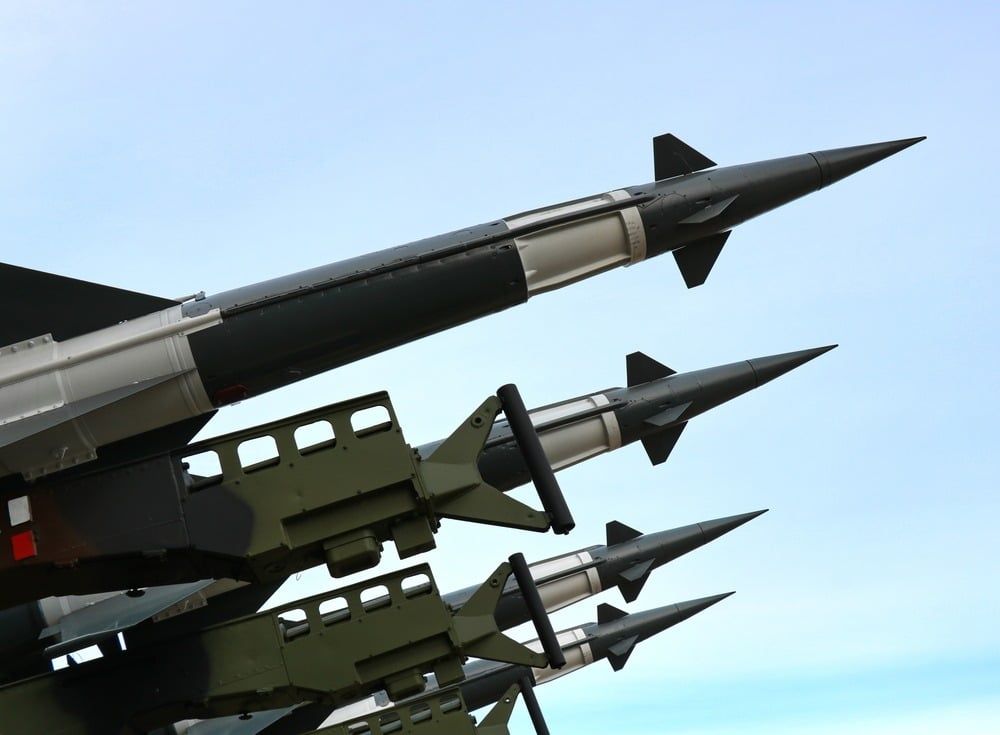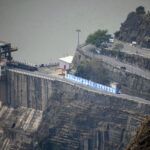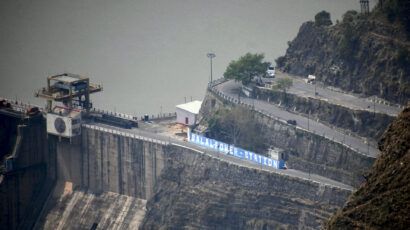Waning nuclear deterrence in South Asia
By Tahir Nazir | March 27, 2018

After India and Pakistan first tested nuclear devices in 1998, people in both countries hoped that nuclear weapons would decrease the incentive for war and lead to sustainable peace in the region. The 1999 Kargil conflict that took place when Pakistan’s military tried to gain control of the 70-kilometer-long Siachen glacier occupied by India in 1984, and the military standoff a few years later in which troops massed along both sides of the border, however, dashed these hopes, and both nations once more found themselves in the spotlight. Unfortunately, the current situation is not much different from the past, with relations between the two nuclear-armed neighbors remaining troubled. As the recently announced US National Security Strategy noted, “the prospect for an Indo-Pakistani military conflict that could lead to a nuclear exchange remains a key concern requiring constant diplomatic attention.”
Disappointment regarding India-Pakistan relations is partly a result of the misplaced and overstated expectations that commentators attach to technological capability, forgetting the naked reality—in situations like these, it is not the gun, but the man behind the gun, that matters. Pinning high hopes on nuclear weapons capability, while underestimating the role of human agency, is contradictory to the logic of deterrence theory. Deterrence only works well when decision makers behave in a rational manner. Leaders in both India and Pakistan must recognize that a continued Cold War-style military arms buildup, absent a framework for conflict resolution, threatens the stability of deterrence in South Asia.
Deterrence and human behavior. Interestingly, deterrence theory is silent on the behavior of the “irrational actor.” As Admiral Arleigh Burke, the longest-serving Chief of Naval Operations in US naval history, put it in 1960, “the major deterrent [to war] is in a man’s mind.” And history is witness to the fact that technological transformation has had little impact on the human inner self. Despite tremendous progress in material terms, basic human instincts remain the same, and the instinct of survival continues to be a central element in shaping human lives and their surroundings. The nation-state is an extension and accumulation of individuals and their threat perceptions, creating a national survival instinct.
There are many factors that determine the behavior of an individual. These include genetics, social norms, faith, culture, and attitudes. Likewise, state behaviors in international affairs are determined by collective historical experiences, belief systems, and geographic parameters. India and Pakistan are no exception; they are the result of historical, political, and geographic forces—and the interaction of these forces with human agency.
New technologies, old thinking. Despite economic progress and technological transformations, strategic planners in both India and Pakistan still operate in a conventional manner. Their respective security strategies and rationales are heavily militarized, and relics of Cold War politics.
The rules of the game changed in 1998, and India’s political leadership must understand that it can neither gain significant strategic advantage from a conventional war with Pakistan, nor does it currently possess the capability to destroy Pakistan’s nuclear weapons capability. Similarly, Pakistan’s security planners must be cognizant of the fact that they cannot overpower India by any means, conventional or nuclear.
Bernard Brodie, the famous architect of nuclear deterrence strategy, once observed that “thus far the chief purpose of our military establishment has been to win wars. From now on its chief purpose must be to avert them. It can have almost no other useful purpose.” Because of deep prevailing political paranoia, however, security elites in both India and Pakistan continue to formulate dangerous nuclear strategies that are not in sync with the basic concept of deterrence. The two countries’ strategic planning is gradually shifting from “war prevention” to “war fighting,” and they are trying hard to undo each other.
In South Asia, nuclear technological transformation is driving the military and nuclear policies of both nations. India’s hybrid warfare strategy is fueling a secessionist movement in Baluchistan (one of four provinces in Pakistan), opening a “second front” with Afghanistan through support to Tehrik-e-Taliban Pakistan (or TTP, the largest militant organization in Pakistan), and threatening to cut water supplies governed by the Indus Waters Treaty between the two nations. India’s military Cold Start Doctrine, which aims to undercut a conventionally weak—but nuclear—adversary by quickly mobilizing conventional retaliatory attacks, is highly destabilizing. In fact, this approach is laying a structural foundation for a potential nuclear war.
In response to India’s Cold Start doctrine, Pakistan developed the NASR short-range ballistic missile to compensate for the rapidly increasing conventional asymmetry between the two nuclear rivals. Pakistan’s approach to the looming conventional threat resembles Russia’s doctrine of “escalate to deescalate,” which conceives of using tactical nuclear weapons in a conventional conflict to compel an adversary to halt large hostilities and respect the status quo. The other potential reason for the development of the NASR missile is the lack of margin of error for Pakistan, which does not have the large nuclear force and vast strategic depth of its nuclear adversary.
The colossal conventional arms buildup in the region, coupled with the nuclearization of the Indian Ocean and policies for the development and potential deployment of ballistic missile defense systems, has the potential to change the balance of power in the region. An unchecked nuclear arms race would have a negative effect on the fragile security environment of the Asian continent in general, and South Asia in particular, pushing the region toward a perpetual “security trilemma” in which actions taken by India to defend against China trigger insecurity in Islamabad.
In my opinion, the strategic landscape of the Asian continent drastically changed after the 2011 announcement of a US “pivot to Asia,” also known as the Rebalance to Asia and the Pacific. This US policy gave rise to what I believe is more accurately described as a “security quadrilemma” than a trilemma: China’s nuclear and conventional buildup to counter the increasing US military buildup in Asia and the Pacific sets off alarm bells in New Delhi, and India’s countermoves against Beijing in turn aggravate Pakistan’s sense of insecurity.
It appears as if the Indian nuclear establishment is under the delusion that possession of nuclear weapons and associated advanced weaponry protects India from any security challenge. That, in turn, gives India the confidence to pursue an aggressive stance and test the credibility of Pakistan’s deterrence by committing serious ceasefire violations along the Line of Control (a temporary border, agreed to by both nations in 1972, that divides the disputed Kashmir region) and the Working Boundary (which India identifies as the international border, but which also includes the disputed Indian-occupied Kashmir territory along with India’s internationally recognized land). To make matters worse, the Indian military’s rhetoric of carrying out “surgical strikes” across the Line of Control—in response to the 2016 attacks by militants on the Pathankot and Uri Indian military bases—is inherently a tectonic shift away from deterrence theory.
Deteriorating conditions. In 2018, according to Pakistan’s Ministry of Foreign Affairs, Indian forces have carried out more than 415 ceasefire violations along the Line of Control and the Working Boundary, resulting in the death of 20 civilians and injuries to 71 others. In retaliation, Pakistan forces have destroyed Indian military check posts, resulting in the killing of five Indian soldiers. According to India’s defense minister, Pakistan has violated the ceasefire agreement along the Line of Control as many as 351 times this year.
In a study published by American disarmament expert Lewis Dunn at the end of the Cold War, Dunn named three conditions that played a critical role in stabilizing deterrence and preventing the use of nuclear weapons by the United States and the Soviet Union: political, technical, and situational conditions. Politically, according to Dunn, if a country’s stakes are low, deterrence works, but if the stakes are existential in nature, deterrence cannot work. Technically, deterrence depends on how reliable and survivable nuclear command and control structures are. And thirdly, the situational conditions for deterrence depend upon the overall global power structure. During the Cold War, deterrence worked because it was bilateral, but today the world power structure is inherently multipolar and therefore more unpredictable.
Unfortunately, in the context of South Asia, these three factors are negatively affecting stability in the region. Political dialogue between India and Pakistan has been suspended since the 2008 Mumbai attacks by the Pakistani militant group Lashkar-e-Taiba, and today there is no chance of resumption of this dialogue. Regarding the technical conditions today, both countries’ command and control systems are still in development and are untested. Situationally, the strategic landscape of South Asia is very complex, with multiple internal and external factors that cast deep shadows on both nations’ national security strategies, pushing the deterrence stability in South Asia toward failure.
Without a credible conflict-resolution framework, and in the absence of a regional arms-control mechanism, strategic circumstances in South Asia are likely to deteriorate further and head toward complete gridlock. Deterrence stability is under tremendous pressure from increasing conventional and unconventional imbalances. The nuclear threshold is getting blurred, and war is no longer a distant threat.
In these circumstances, political and military establishments in both countries should do some soul-searching and realize that clinging to the past will darken the future. All stakeholders should ask themselves three simple questions: Do nuclear war-fighting capabilities enhance or erode deterrence? Are these military and nuclear buildups sustainable? And could these gigantic resources instead be invested in building peace, reducing abject poverty, and saving humanity from the edge of nuclear winter?
Together, we make the world safer.
The Bulletin elevates expert voices above the noise. But as an independent nonprofit organization, our operations depend on the support of readers like you. Help us continue to deliver quality journalism that holds leaders accountable. Your support of our work at any level is important. In return, we promise our coverage will be understandable, influential, vigilant, solution-oriented, and fair-minded. Together we can make a difference.
Topics: Nuclear Weapons, Voices of Tomorrow















